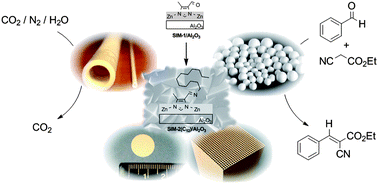Engineering structured MOF at nano and macroscales for catalysis and separation†
Abstract
Here, we present for the first time the combination of the postfunctionalization of a MOF with its shaping as structured bodies. This study deals with the porous zinc carboxylimidazolate material known as SIM-1. A great advantage of this method is that the aldehyde moieties present on the structure walls allow organic modifications in the solid state, such as


 Please wait while we load your content...
Please wait while we load your content...